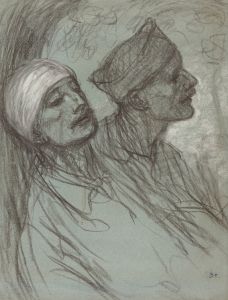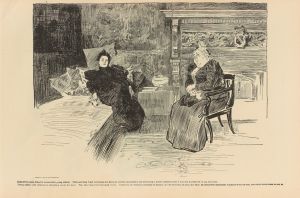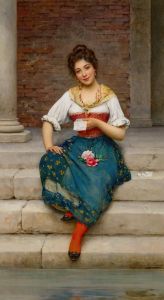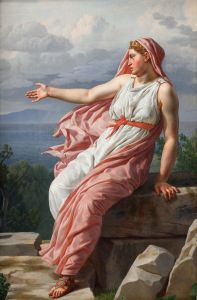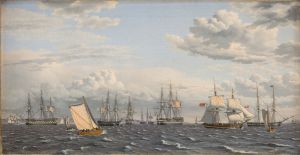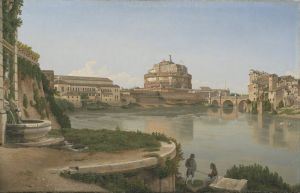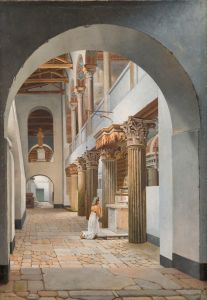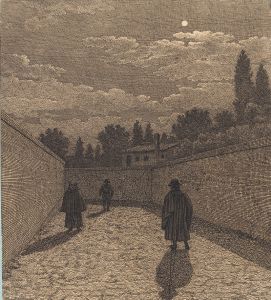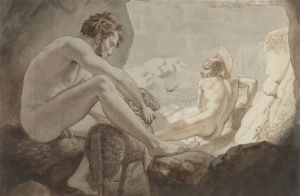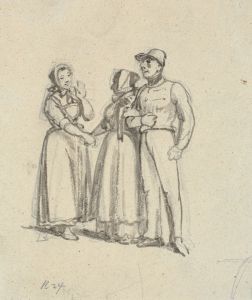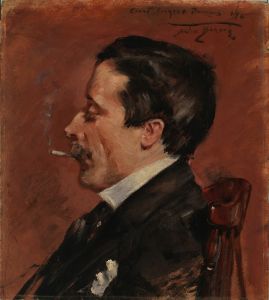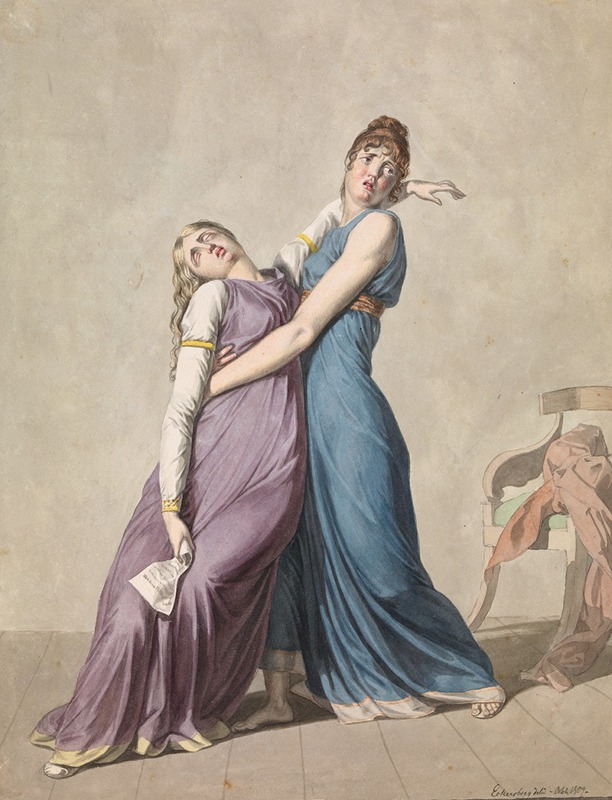
A Woman is Supporting Another Woman, Who has fainted upon Reading a Letter
A hand-painted replica of Christoffer Wilhelm Eckersberg’s masterpiece A Woman is Supporting Another Woman, Who has fainted upon Reading a Letter, meticulously crafted by professional artists to capture the true essence of the original. Each piece is created with museum-quality canvas and rare mineral pigments, carefully painted by experienced artists with delicate brushstrokes and rich, layered colors to perfectly recreate the texture of the original artwork. Unlike machine-printed reproductions, this hand-painted version brings the painting to life, infused with the artist’s emotions and skill in every stroke. Whether for personal collection or home decoration, it instantly elevates the artistic atmosphere of any space.
Christoffer Wilhelm Eckersberg, often referred to as the "father of Danish painting," created the artwork titled A Woman is Supporting Another Woman, Who has Fainted upon Reading a Letter. This painting is a notable example of Eckersberg's mastery in portraying human emotions and domestic scenes with precision and sensitivity. The work is believed to have been completed in 1813, during Eckersberg's time in Paris, where he studied under the French neoclassical painter Jacques-Louis David.
The painting depicts an intimate and dramatic moment: a woman has fainted after reading a letter, and another woman is seen supporting her. The exact content of the letter is not revealed, leaving the viewer to focus on the emotional intensity of the scene. Eckersberg's attention to detail is evident in the realistic rendering of the women's clothing, facial expressions, and the surrounding interior. The composition reflects the influence of neoclassicism, particularly in its clarity, balance, and emphasis on human figures.
Eckersberg's works often explored themes of human relationships and the emotional depth of everyday life, and this painting is no exception. It demonstrates his ability to capture a fleeting moment with both technical skill and emotional resonance. The use of light and shadow in the painting enhances the dramatic effect, drawing attention to the central figures and their interaction.
The painting is currently housed in the Statens Museum for Kunst (National Gallery of Denmark) in Copenhagen, which holds a significant collection of Eckersberg's works. It remains an important piece in the study of Danish Golden Age art, showcasing Eckersberg's contribution to the development of realism and his influence on subsequent generations of Danish artists.
No further specific historical context or interpretation of the painting's narrative has been documented, as Eckersberg himself did not leave detailed explanations of his works. As such, the painting is appreciated primarily for its artistic qualities and its place within Eckersberg's oeuvre.






